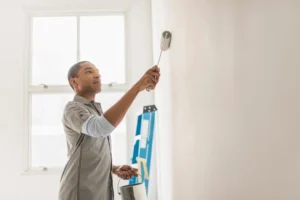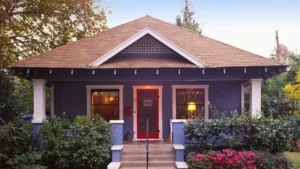Marble countertops have long been a symbol of elegance and sophistication in homes, especially in kitchens and bathrooms. Their natural beauty, unique veining, and classic appeal make them a top choice for homeowners and designers alike. However, while marble countertops offer unparalleled aesthetic value, they require proper maintenance and care to maintain their timeless charm. This guide will explore the advantages, drawbacks, installation process, maintenance tips, and comparisons with other countertop materials to help you make an informed decision.
Why Choose Marble Countertops?
1. Unmatched Aesthetic Appeal
One of the main reasons homeowners opt for marble countertops is their striking appearance. Each marble slab is unique, featuring distinctive veining patterns and color variations. Whether you prefer the classic white Carrara marble or the dramatic tones of Calacatta or Statuario, marble countertops can elevate the look of any kitchen or bathroom.
2. High Durability and Longevity
Marble is a natural stone that, when properly maintained, can last for decades. Though softer than granite, its durability makes it a reliable choice for countertops. Marble countertops develop a natural patina over time, enhancing their character and charm.
3. Heat Resistance
A major benefit of marble countertops is their heat resistance. Bakers and chefs appreciate the cool surface of marble, which is ideal for rolling dough and working with delicate confections. However, while marble can withstand heat, it is advisable to use trivets or heat pads to prevent potential damage from hot pans and pots.
4. Adds Value to Your Home
Investing in marble countertops can increase the resale value of your home. Their luxurious appeal attracts potential buyers and makes a lasting impression, making your property more desirable in the real estate market.
Considerations Before Installing Marble Countertops
1. Porosity and Staining Concerns
One of the primary drawbacks of marble countertops is their porosity. Marble can absorb liquids, leading to stains from wine, coffee, and acidic substances. To prevent staining, it is essential to seal marble countertops regularly and wipe spills immediately.
2. Susceptibility to Scratches and Etching
Marble is softer than granite and quartz, making it more prone to scratches and etching from acidic substances like lemon juice or vinegar. Using cutting boards and coasters can help minimize damage.
3. Maintenance Requirements
Unlike quartz or laminate, marble countertops require periodic sealing and careful maintenance. While some homeowners embrace the natural aging process of marble, others prefer keeping it pristine by sealing it regularly.
Types of Marble for Countertops
1. Carrara Marble
Carrara marble is one of the most popular choices for marble countertops due to its affordability and timeless white and gray veining. It provides a soft, subtle look suitable for both modern and traditional kitchens.
2. Calacatta Marble
Calacatta marble is often considered more luxurious than Carrara, featuring bold veining and a whiter background. It is a preferred choice for high-end designs and statement kitchen islands.
3. Statuario Marble
Statuario marble offers dramatic veining with a crisp white background, making it a premium option for countertops. Due to its limited availability, it is one of the more expensive marble choices.
4. Emperador Marble
For those who prefer darker tones, Emperador marble comes in rich brown hues with contrasting white veins. This type of marble is ideal for creating a warm and inviting ambiance in kitchens and bathrooms.
Marble Countertops vs. Other Countertop Materials
1. Marble vs. Granite
While both marble and granite are natural stones, granite is more resistant to scratching and staining due to its density. However, marble countertops offer a more refined and classic look compared to the grainy texture of granite.
2. Marble vs. Quartz
Quartz is engineered stone, making it non-porous and highly resistant to stains and scratches. While quartz requires less maintenance, it lacks the natural variation and authenticity of marble countertops.
3. Marble vs. Laminate
Laminate countertops are an affordable alternative, but they cannot match the elegance and durability of marble. Over time, laminate surfaces may chip or wear out, whereas marble countertops can last a lifetime with proper care.
How to Maintain Marble Countertops
1. Regular Sealing
To protect marble countertops from stains and etching, it is essential to apply a high-quality sealant every 6 to 12 months. Sealing creates a protective barrier that prevents liquids from penetrating the stone.
2. Daily Cleaning Routine
Use a pH-neutral cleaner or mild soap with warm water to clean marble countertops. Avoid harsh chemicals, vinegar, or citrus-based cleaners, as they can damage the surface.
3. Preventing Scratches and Etching
Always use cutting boards when preparing food and place coasters under glasses to prevent water rings. Avoid dragging heavy objects across marble countertops to minimize the risk of scratches.
4. Immediate Spill Cleanup
Marble countertops are vulnerable to stains, so it is crucial to wipe up spills immediately. Use a soft cloth to blot (not wipe) the spill and prevent it from spreading.
Installing Marble Countertops: What to Expect
1. Selecting the Slab
Each marble slab is unique, so it is important to visit a stone yard and choose the exact slab you want. Consider factors such as veining patterns, color consistency, and thickness.
2. Professional Installation
Installing marble countertops requires professional expertise due to their weight and delicate nature. A professional fabricator will cut, polish, and seal the marble before installation.
3. Seam Placement and Edge Profiles
Discuss seam placement with your installer to achieve a seamless look. Additionally, choose an edge profile that complements your design, such as beveled, bullnose, or ogee edges.
Cost of Marble Countertops
1. Price Range
The cost of marble countertops varies depending on the type, quality, and thickness of the stone. Prices generally range from $40 to $200 per square foot, including installation.
2. Factors Affecting Cost
- Rarity and origin of the marble
- Thickness of the slab
- Edge profile selection
- Labor and installation charges
Conclusion
Marble countertops remain a top choice for homeowners who appreciate elegance, natural beauty, and timeless appeal. While they require regular maintenance and care, the aesthetic and functional benefits they offer make them a worthwhile investment. Whether you are renovating your kitchen or designing a luxurious bathroom, marble countertops can elevate your space with their classic charm. With proper sealing, cleaning, and care, marble countertops can last for generations, making them a valuable addition to any home.






